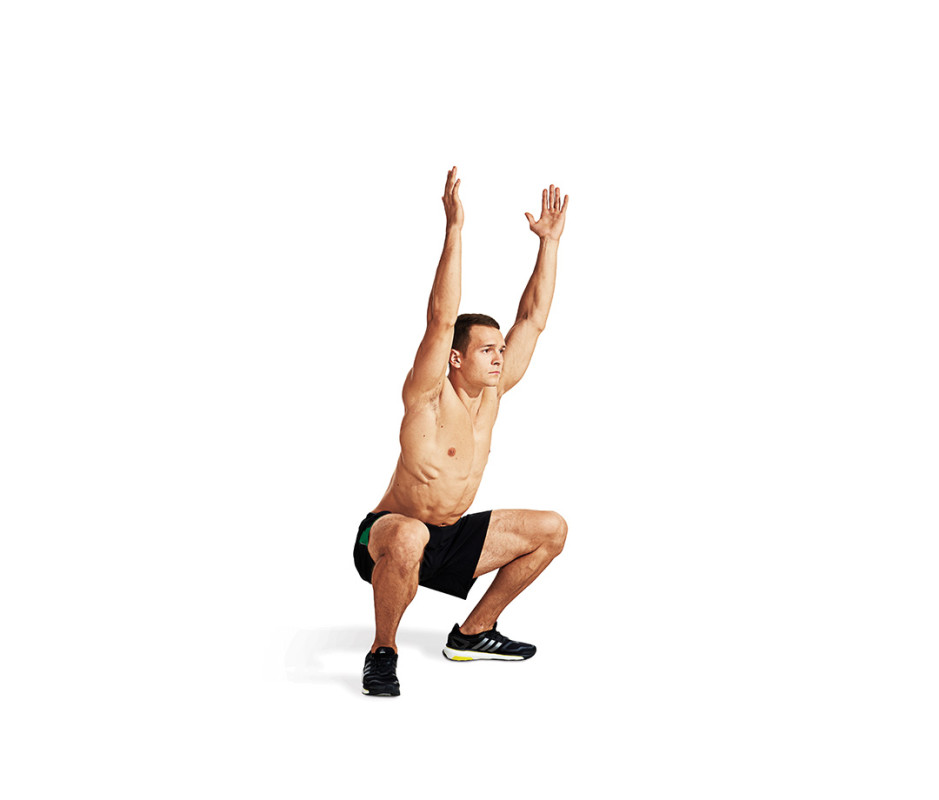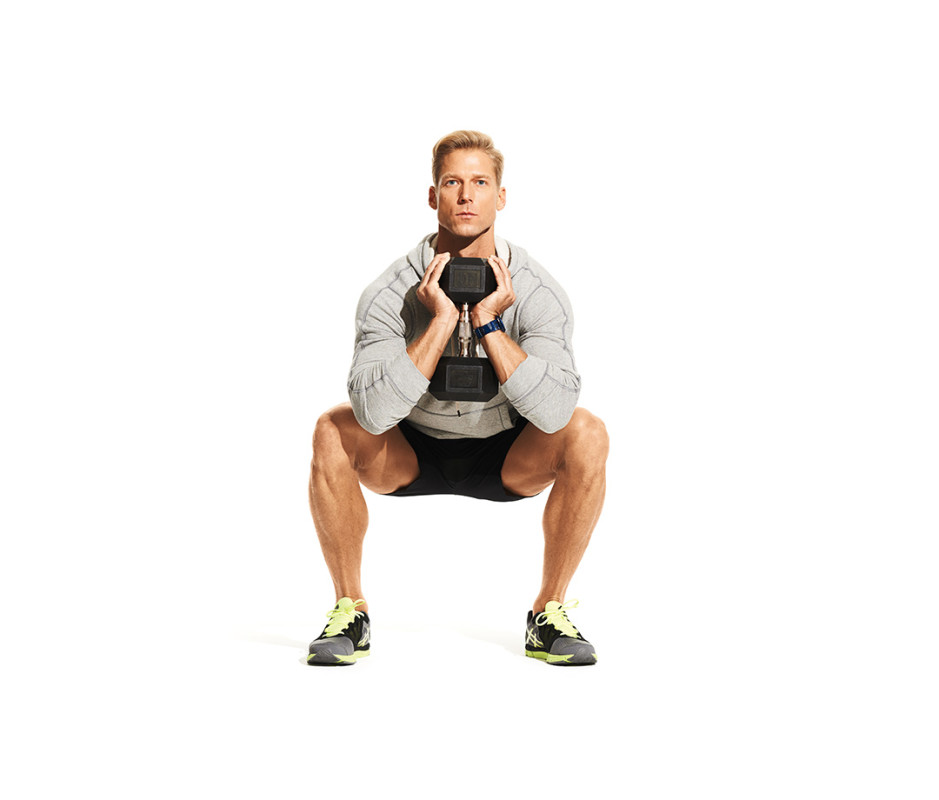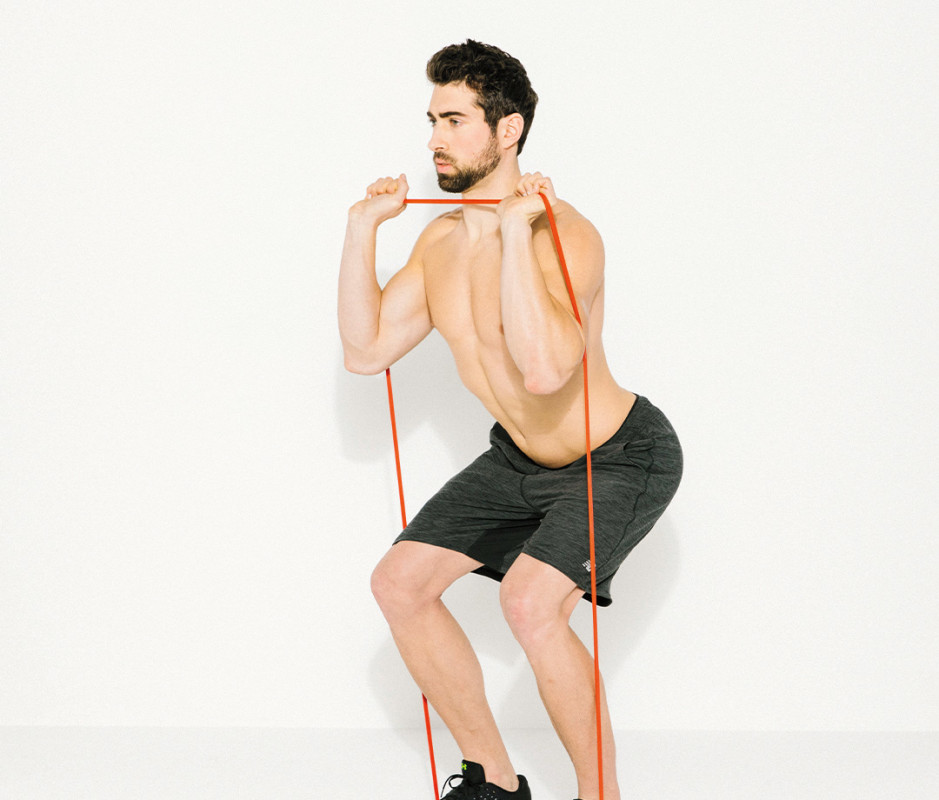Traditional squats are one of the best leg exercises for firing up your entire posterior chain, building size and strength from quads to calves. But if you’re less worried about increasing your load capacity and more about isolating your glutes, quads, or both, sumo squats might be your secret weapon for serious leg day gains.
“Traditional squats focus more on quads, while sumo squats shift more of the load to the glutes and inner thighs due to the wider stance,” says Juan Tamariz, senior personal training leader at Life Time Middletown-Red Bank.
Beyond noticeable muscle growth, they also boost inner thigh (adductor) activation and lower-body flexibility, all while supporting long-term strength and joint health—the kind of benefits that keep you moving strong for years.
To understand how sumo squats differ from classic squats, and why they’re so effective, we spoke with experts who break down proper form, the muscles worked, key benefits, progression tips, and variations you’ll want to add to your next leg day routine.
Beth Bischoff
How to Perform Sumo Squats
Below, Tamariz walks you through how to perform sumo squats with perfect form.
- Stand tall, feet placed outside shoulder-width apart and toes turned out to a 45-degree angle.
- Engage your core, maintain a tall chest, keep your shoulders back, and keep a neutral spine.
- Press your hips back and bend your knees to lower into a squat.
- Go as deep as your mobility allows with proper form. Try to get your thighs parallel to the ground.
- Press through your heels to stand tall, squeezing your glutes once you reach the top.
Tips for Proper Knee and Hip Alignment
- Your knees should track over your toes; don’t allow them to cave inward.
- Slightly rotate your hips externally as you lower to preserve joint alignment.
- Distribute your weight evenly through your mid-foot and heels—not your toes.
- Maintain a neutral spine and strong core for hip stability throughout the exercise.
What Do Sumo Squats Work?
If you’re looking to perform sumo squats to grow your glutes, you’re on the right track. Sumo squats work the glutes, hamstrings, and quads, with an additional focus on the inner thighs (adductors).
“The sumo squat is one of the many variations of a traditional squat with the main difference [being] the width of stance and the external rotation of one’s feet,” says Mike Poirier, CSCS, VP of fitness at The Edge, “This creates a dynamic where you focus more on [the] inner thigh (adductors).
The Benefits
There are many squat variations out there, but what makes sumo squats especially effective? For those looking to sculpt strong, muscular legs, sumo squats are one of the most productive quad exercises of all time.
- Emphasis on the glutes: Sumo squats do a stellar job at targeting the glutes—particularly during the deeper part of the motion. According to Tamariz, the hip angle and wider stance naturally recruit more glute engagement.
- Activation of the inner thighs: Assuming a wider stance and externally rotating the feet places greater load on the adductors. These muscles act as stabilizers and “primary movers” during the descent and ascent, Tamariz notes.
- Improved flexibility: This move improves lower-body flexibility and hip mobility.
- Joint-friendly: For those looking for joint-friendly movement, sumo squats offer joint-friendly loading—an excellent alternative for those with lower back issues or knee concerns.
- Comfortable movement pattern: Most gym-goers find sumo squats to be “a more comfortable movement pattern” and easier to stay upright while protecting the lower back, says Poirier.
How To Progress Sumo Squats
If you’ve mastered the standard sumo squat and are looking to take the exercise to the next level, Tamariz has you covered with progression tips.
- For strength gains, incorporate heavier weights (kettlebell, dumbbells, or barbell).
- For increased mobility and depth, assume a deeper stance and range of motion with proper form.
- For enhanced endurance or conditioning, focus on higher reps or temp work, such as pauses and slow eccentrics.
- For best results, incorporate all three tips over time within a periodized training regimen.
Sumo Squats Variations
There are many sumo squat variations to choose from, depending on your fitness level and goals.
1. Goblet Sumo Squat
James Michelfelder
How to Do It
This exercise supports upright posture and depth.
- Stand tall, feet outside shoulder-width, toes turned out to 45 degrees.
- Hold a kettlebell or dumbbell at chest level.
- Bend your knees and hinge at the hips to lower into a standard sumo squat.
- Press through your heels to stand tall, squeezing your glutes at the top.
2. Sumo Squat With Pulse
James Michelfelder
How to Do It
This variation is excellent for glute and adductor burnout and revving up time under tension.
- Stand tall, feet outside shoulder-width, toes turned out to 45 degrees.
- Bend your knees and hinge at the hips to lower into a standard sumo squat.
- Pulse 2 to 3 times at the bottom of the movement.
- Press through your heels to rise to standing.
3. Resistance Band Sumo Squat
Emiliano Granado
How to Do It
This move strengthens the stabilizers while forcing you to maintain solid knee tracking.
- Stand on a resistance band, assuming a wide stance.
- Hold the top of the band with both hands at shoulder level.
- Activate your core and lower into a deep squat, maintaining a tall chest.
- Hold for a moment at the bottom, feeling the tension in your thighs and glutes.
- Press through your heels to rise back up.
4. Barbell Sumo Back Squat
James Michelfelder
How to Do It
This exercise promotes strength stimulus for experienced lifters while engaging the glutes and adductors.
- Position a barbell on a squat rack at shoulder level.
- Step under the barbell, placing it across your upper traps. Hold onto the bar just outside shoulder-width.
- Step back and assume a wide sumo stance, toes pointed out 45 degrees.
- Keep your chest tall as you lower into a squat by bending your knees and pressing your hips back.
- Lower until your thighs are at least parallel to the ground.
- Press through your heels to stand up tall, squeezing your glutes at the top of the movement.
